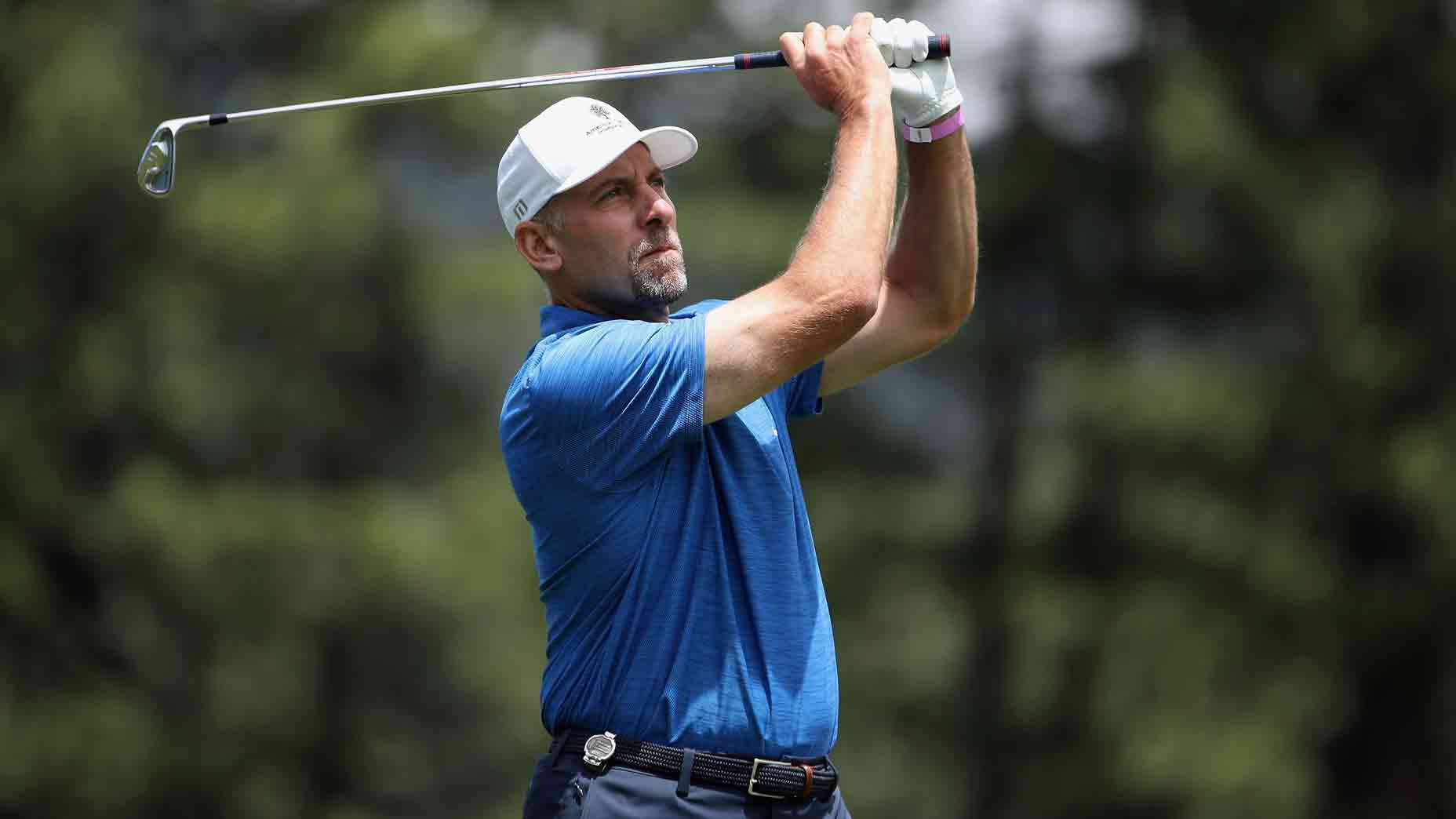The baseball Hall of Famer and analyst for Fox Sports knows all too well that in golf no one’s out there running down your mistake pitches.
This interview was originally published in the May 2023 issue of GOLF Magazine.
***
G: From your career as a major league pitcher, what’s a skill, mental or physical, that you think has translated well to golf?
JS: The biggest thing is when I see something clearly — whether it’s a line on a putt or a shot through a narrow gap — it reminds me of being on the mound and trying to [focus on] a square inch off the plate or trying to hit the glove. When I see all this space [around me], not as good.
G: Everyone who starts off in golf — they’re not great. You now have a very solid game. What’s one piece of advice or a swing thought or tip that you’ve really held onto?
JS: Everything I’ve done in golf has kind of been self-taught. Until recently, I never took a lesson. But with that lesson, I’m really trying to get my right hand through the shot.
G: What is it about golf that attracts so many athletes from other professional sports?
JS: It’s a great way to play longer, right? There’s no doubt you can play golf longer [than other sports]. And it’s about the competition — playing against certain people, playing in tournaments. Athletically, [the golf swing] is a movement most people who played sports can make, but not everybody can get to the point of hitting the ball the way they want to. It’s something you can never master.
G: Wind is a huge factor in golf. Was it something you ever had to think about when you were pitching?
JS: Oh, absolutely. If you had the wind at your back, then, of course, it was harder [for a batter] to hit it out. Conversely, if the wind is in your face, that means your breaking ball and secondary stuff ’s gonna break more. But it also means if they hit a fly ball —
G: Gone.
JS: It’s gonna go far.
G: As a pitcher, did you have to deal with crosswinds?
JS: Yeah, sometimes. Chicago Wrigley was probably one of the windiest [ballparks], along with San Francisco when it used to be on the bay. Chicago, first thing you did when you got there was look at the flag, and [sometimes you got] a little twinge that you didn’t want to pitch the ball. [Laughs.]
G: On the golf course, do you ever get the same feeling you had when you were out on the mound?
JS: Well, the big thing about golf is that you are out there by yourself. Pitching, you start the action, but when you release the ball, [if the] results are not the way you want, you get help to bail you out — or not so much help. In golf, you gotta play your foul balls, you know? [Laughs.] It makes a difference.
This interview has been condensed and edited for clarity.
